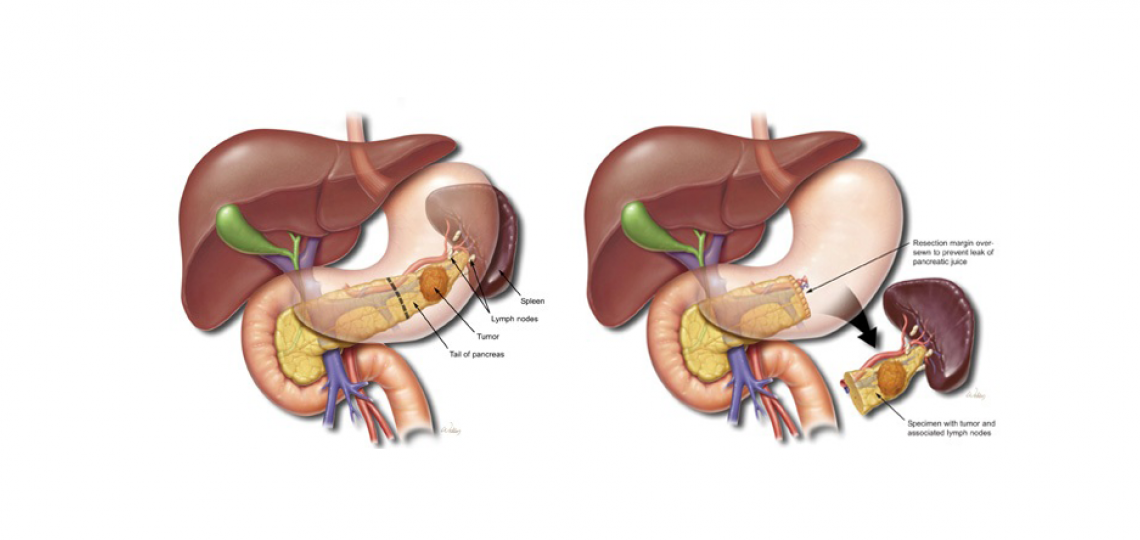A distal pancreatectomy involves removing the body and tail of the pancreas and the spleen. It is performed to treat pancreatic cancer localized in the end of the pancreas, but may also be used for chronic pancreatitis, pancreatic pseudocysts and injury due to trauma. When the disease affects the splenic artery or vein, the adjacent spleen along with the tail of the pancreas is often removed.
After removal of the end of the pancreas, the remaining portion of the organ functions normally by producing and releasing digestive enzymes and hormones. Usually, patients undergo radiation therapy or chemotherapy in addition to the surgical procedure.
About the Surgery
While this is a major surgery and can be very technically challenging, our surgeons specialize in pancreas surgery, have years of training and experience and are experts in performing surgery with very little blood loss.
This surgery is performed laparoscopically, which means small incisions versus a large incision in your abdomen. However, the surgeon may need to convert to regular surgery with a bigger incision. Most patients can safely go home the next morning after a laparoscopic distal pancreatectomy. However, your care team will make sure you are ready and it is safe for you to go home. On the day of discharge, plan to leave the hospital before 11 a.m.
After Surgery
Most patients need about five to six weeks to completely recover from the procedure. Each week you will feel better and be able to do more. It is normal to be tired, have a poor appetite, not be able to eat much at a time, have indigestion and some moderate pain at the incision site. All these symptoms will improve gradually with time.
 Credit
Credit









